Carne en su Jugo
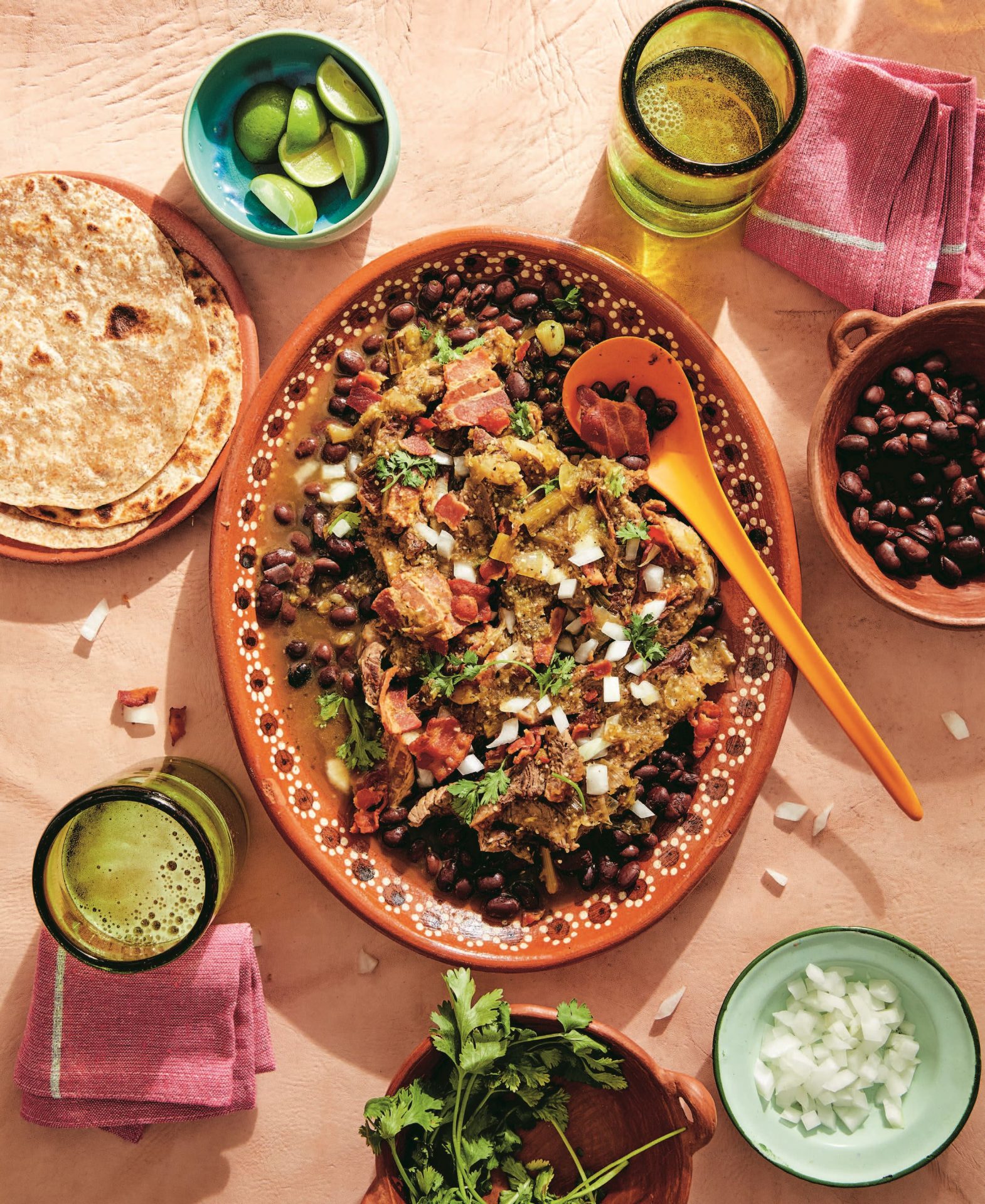
Reprinted with permission from Mi Cocina: Recipes and Rapture from My Kitchen in Mexico by Rick Martinez, copyright © 2022. Photographs copyright © 2022 by Ren Fuller. Published by Clarkson Potter Publishers, an imprint of Penguin Random House.
Sirloin steak simmered in a roasted tomatillo salsa with bacon and served over beans.
I have always been fascinated by the name of this dish: meat served in its own juices. I saw it on signs and menus all across Jalisco. And this dish actually surpassed my expectations. Tapatíos (people from Guadalajara) love a brothy dish. Tortas Ahogadas (p. 248), the iconic torta from Guadalajara, is drowned in tomato and chile de árbol salsas. Birria, braised goat, is served shredded and covered with the braising liquid or consommé it was cooked in. So it’s not surprising that carne en su jugo is a dish of meat and beans and their broth covered in a charred salsa.
There is something very comforting about a dish that is close to being a soup or stew. I think you tend to eat it more slowly, with a spoon and not just in a taco. I end up savoring each spoonful like I would chicken soup. Carne en su jugo has so many layers of flavor from the meat, the bacon, the charred salsa, and the beans that every bite is always a little different.
SERVES 8
INGREDIENTS
- 7 medium tomatillos (12 oz/ 340 g), husked and rinsed
- ½ medium white onion (7.01 oz/201 g), halved
- 2 to 4 chiles serranos (0.85 oz/ 24.3 g each), stemmed
- 6 garlic cloves, unpeeled
- ¼ cup (packed) fresh cilantro leaves with tender stems (1.41 oz/40 g)
- 1.1 pounds (453 g) thick-cut smoked bacon, cut into 2-inch pieces
- 2¼ pounds (1 kg) boneless sirloin steak
- 12 large scallions (10.8 oz/
- 306 g), ends trimmed, cut into ½-inch pieces
- cups homemade chicken stock or store-bought low-sodium chicken broth
- 1 tablespoon Morton kosher salt (0.7 oz/20 g)
- cups Frijoles de Olla, (see below), and their cooking liquid, warm
FOR SERVING
- Chopped onion
- Chopped cilantro
- Lime wedges
- Warm Tortillas de Maíz, (see below)
METHOD
1. Line a large skillet, preferably cast-iron, with foil. Heat over high heat for about 2 minutes, or until very hot. Cook the tomatillos, onion, chiles serranos, and garlic, turning occasionally, until all sides are charred, for about 3 minutes for the garlic, 4 to 5 minutes for the chiles serranos, and 6 to 8 minutes for the onion and tomatillos. Transfer to a plate and let cool. Peel the garlic.
2. In a blender on medium-low speed, puree the tomatillo, onion, chiles serranos, peeled garlic, and the cilantro until smooth. Set aside.
3. In a large heavy pot, arrange the bacon in an even layer. Cook over medium- high heat and let the bacon slowly render, stirring occasionally, until crispy, for 9 to 11 minutes. Transfer to a paper towel-lined plate, leaving the fat in the pan.
4. Carefully place the steak in the bacon fat. Cook over medium-high heat until browned, for 5 to 6 minutes per side. Transfer to a cutting board and let rest for 10 minutes. Cut into ¼-inch-thick strips.
5. In the same skillet, cook the scallions over medium-high heat, stirring, until browned and tender, for 6 to 8 minutes. Return the steak and half of the bacon to the pot. Stir in the salsa verde, stock, and salt; bring to a boil. Reduce the heat to medium; simmer until the steak is very tender, for about 20 minutes.
6. Serve the steak and salsa over the hot frijoles de olla and garnish with the onion, cilantro, and remaining bacon. Serve lime wedges and tortillas alongside.
Frijoles de Olla (Simple beans with scallions and herbs)
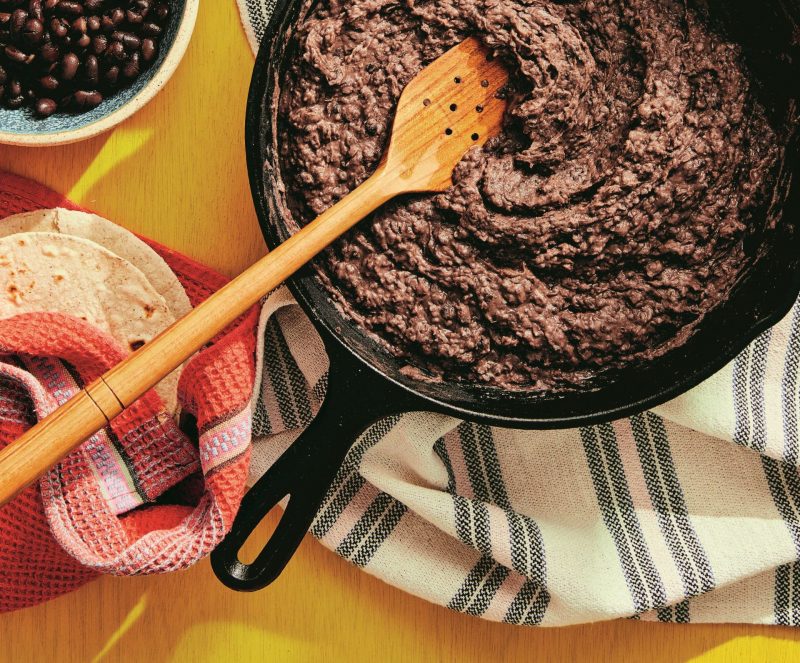
I do not soak beans. I have experimented with different soaking methods and different beans, and when you soak beans in water, guess what they taste like—water. My preferred method is to cook them from dry in a simple flavorful liquid over a low flame until they are tender. This method takes only slightly longer than soaked beans, about 1 hour longer depending on the age of your beans (older beans will take longer to cook even if you soak them). I also find that the broth is addictively delicious when you cook from dry. A longer cook time means greater flavor development and a richer broth.
If you can find avocado leaves (fresh or dried), I highly recommend trying them. They have a spicy cinnamon- allspice-citrus flavor that completely changes the way you will think of a pot of beans. They are commonly used in the southern part of México, where avocados are grown.
MAKES ABOUT 12 CUPS
INGREDIENTS
- 1 pound (453 g) dried beans, such as black, pinto, cannellini, or kidney, rinsed and picked through
- 3 medium scallions (2.3 oz/67 g), roots trimmed, or ¼ medium onion
- 3 garlic cloves, lightly crushed
- 2 avocado or bay leaves, dried or fresh
- 3 fresh epazote sprigs or a combination of parsley, oregano, and/or mint sprigs
- 1 tablespoon plus ½ teaspoon Morton kosher salt (0.59 oz/ 17 g), plus more to taste
METHOD
1. In a large pot, combine the beans, scallions, garlic, avocado leaves, epazote, salt, and 16 cups water and bring to a boil. Reduce the heat to medium-low and cook at a slow simmer, uncovered, skimming and stirring occasionally, and checking the beans every hour to see if they need more water (you want the beans to always be covered by water), until the beans are tender, for 2½ to 3½ hours. The cooking time will depend on how old the beans are; freshly dried beans might be fully cooked in as little as 1½ hours.
2. Remove and discard the scallions, garlic, and herbs. Taste and season the beans with more salt if desired.
DO AHEAD : The beans can be refrigerated for up to 2 days. Or, make them up to 3 months ahead and freeze in an airtight container.
Tortillas de Maíz (Corn flatbread made from ground corn)
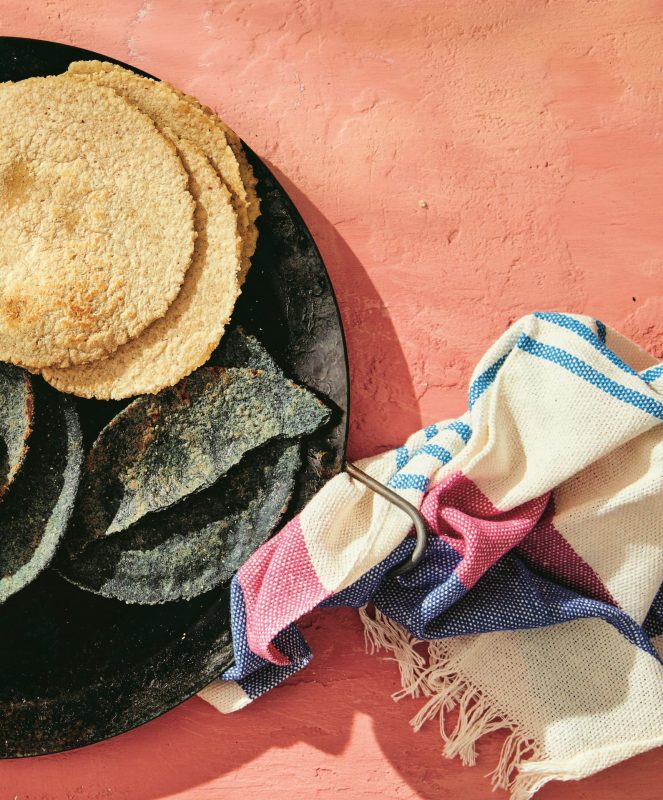
I was in my early twenties when I finally tasted a real corn tortilla made with fresh corn masa. Before that moment, I thought of corn tortillas as mere delivery vehicles for taco fillings. And then I took a bite of a taco made with a good tortilla and I understood. The tortillas had an almost custardy mouthfeel on the inside with a toasted exterior that contributed to the different textures of a taco. And the flavor of the corn was earthy and nutty and was balanced out by the acidity of the salsa. Imagine you had only ever eaten sliced, white sandwich bread your entire life and then were introduced to a sourdough boule. Find fresh masa and make these tortillas and you will be amazed how much better your food is with the flavor of freshly ground corn in every bite.
You can source fresh masa at Mexican grocery stores or at tortillerias (tortilla bakeries).
MAKES 12 TORTILLAS
INGREDIENTS
- 1½ pounds (680 g) fresh yellow, blue, pink, or white fine-grind corn masa for tortillas
- ¾ teaspoon Morton kosher salt (0.14 oz/4 g)
SPECIAL EQUIPMENT
- 1-gallon zip-top freezer bag
- Tortilla press, a smooth-bottomed 10-inch skillet, or a glass pie plate
METHOD
1. In a large bowl, knead the masa, salt, and ¹⁄³ cup water with your hands until well incorporated and the mixture is soft and pliable but doesn’t stick to your hands, for about 4 minutes. If it’s still dry or crumbly or sticks to your hands, add a tablespoon or two more water and continue to mix. Cover the bowl with plastic and let the masa sit for 30 minutes to rest.
2. Cut and remove the zip-top from a 1-gallon freezer bag. Cut two opposite sides of the bag, leaving the bottom intact so that the bag can open and close like a book. If you’re using a tortilla press, trim the cut sides of the bag to fit the flat surface of the press.
3. Divide the dough into 12 portions the size of Ping-Pong balls (about ¼ cup or 54 g each). Arrange on a sheet pan and keep covered with a damp kitchen towel while you press and cook the tortillas.
4. Heat a comal, medium cast-iron skillet, or griddle over medium-high heat (you’ll cook the tortillas one at a time unless you have a large cast-iron skillet or griddle). Place the prepared plastic bag inside the press so that the folded side of the bag is on the hinged side of the press. Working with one dough ball at a time, open the press and bag and place one ball in the center. Fold the bag over and gently press, holding steady, firm pressure for a few seconds, and flatten the dough to a 7-inch round. Open the press and remove the plastic with the dough pressed inside. Peel one side of the bag from the dough. Place the dough on your open palm so it is plastic-side up, and peel off the second side.
5. Cook the tortillas one at a time (unless you’re using a large griddle), flipping it every 30 seconds. You’ll flip it two times, cooking each tortilla until it just starts to brown in spots, for about 90 seconds total. Stack and wrap the cooked tortillas in a clean kitchen towel to keep them warm. Repeat with the remaining dough balls and serve warm.
DO AHEAD : The tortillas can be made 3 days ahead. Wrap tightly in plastic wrap. Reheat in a medium cast-iron skillet or griddle over medium heat until heated through, for about 60 seconds per side.
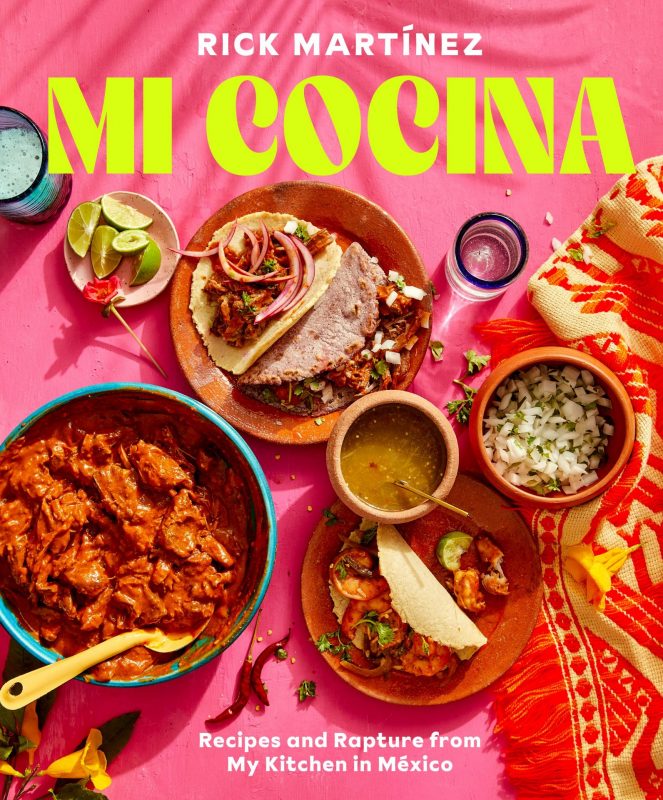
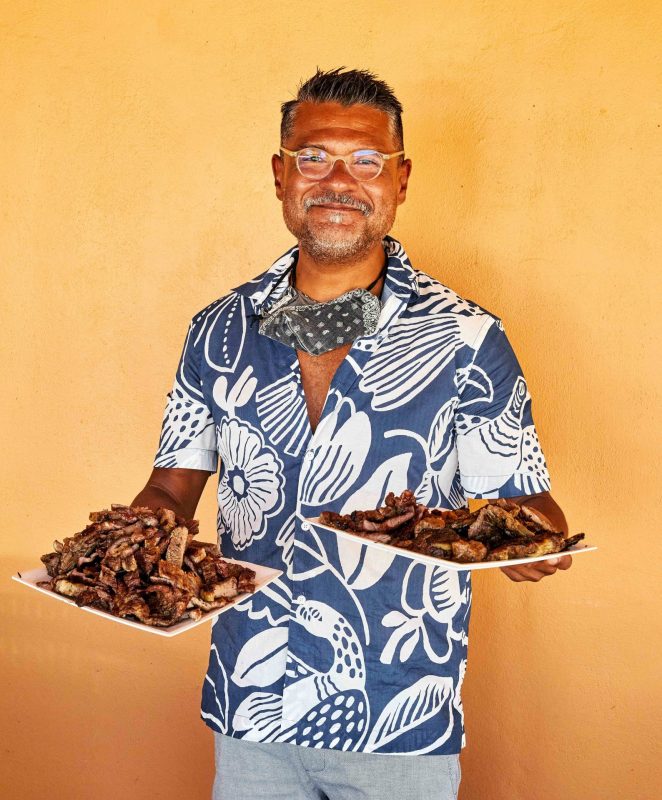
Rick Martínez is the host of the video series “Mi Cocina” and “Sweet Heat,” both on the Food52 YouTube channel and “Pruébalo” on the Babish Culinary Universe channel. He cohosts the Borderline Salty podcast with Carla Lalli Music, is a regular contributor the New York Times, and teaches live, weekly cooking classes for the Food Network Kitchen. He currently resides in Mazatlán with his dog, Choco, where he cooks, eats, and enjoys the Mexican Pacific coast.
